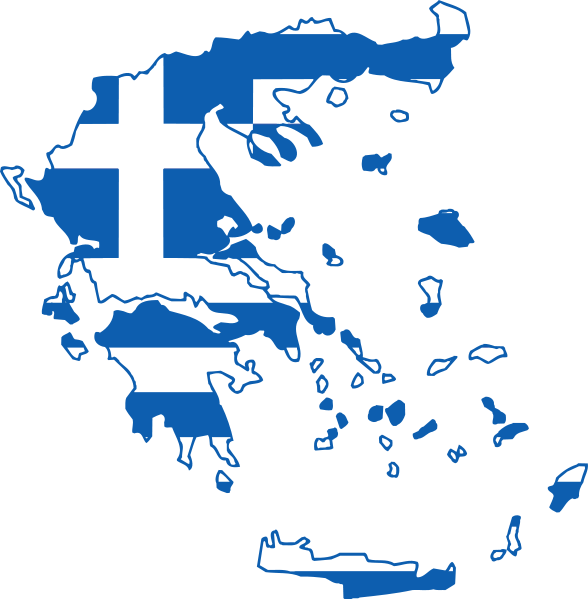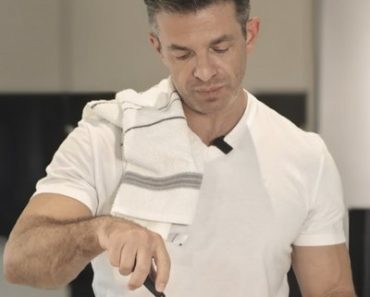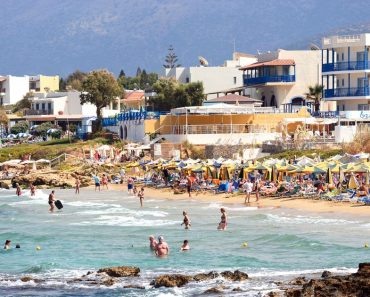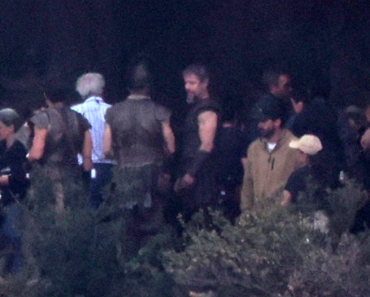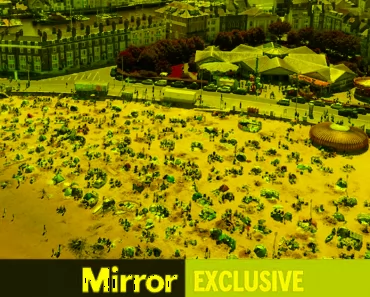This article was produced by National Geographic Traveller (UK).
Greeks don’t hike. You’ll hear this everywhere you go in Greece — usually from the locals themselves. They can’t see the point, apparently; uses up too much beach time.
If that’s the case then no one told Anna Diamantopoulou and her jovial group of trekking pole-wielding beginners. I encounter them on the steep stone path that snakes down into Vikos Gorge from the village of Monodendri. They’re audible long before they’re visible, excited chatter echoing up through the thickly forested slopes of the canyon. It’s slick underfoot from the morning dew, and every inexpert manoeuvre or half-slip is greeted with a mini cheer.
Mountain leader Anna — in a neon orange T-shirt, her long dark hair plaited over one shoulder — is the back-stop for the 20-strong gaggle of hikers from Thessaloniki. She chats amicably as she walks. “Greeks traditionally don’t hike, but that’s starting to change,” she tells me. “There’s been a big shift since Covid, with people starting to realise how blessed we are with so many wonderful trails. But we’re still miles behind other countries.”
At that exact moment, there’s a curt, German-accented “excuse me” from behind, and we’re overtaken by a quartet of hikers, as synchronised in kit and movement as an Olympic cycling pursuit team. “See!” says Anna, with delight, as the foursome disappear down the path. “There’s the cultural difference right there.”
Vikos Gorge is the flagship hike in Zagori, and the only one that offers even a vague threat of crowds. Head out pretty much anywhere else on the network of narrow paths that lace together the area’s 46 stone-built villages — known as Zagorohoria — and it’ll likely just be you, your thoughts and the soporific whir of the cicadas.
In this mountainous, 400sq-mile tranche of northwest Greece, progress is an afterthought. A few roads have been attempted, but given the wildness of the landscape and the excitability of the contours, they’re comically circuitous. Development is controlled: nothing more than two storeys, and any building materials you like so long as they’re light grey limestone and dark grey slate.
“The villages of Zagori seem to come from inside the Earth,” the driver who’d brought me here from lakeside Ioannina, the capital of Greece’s Epirus region, had said. It’d confused me at the time. But arriving in Monodendri, it made perfect sense. The buildings don’t so much blend in with their surroundings as bleed into them.

“Greeks traditionally don’t hike, but that’s starting to change,” says mountain guide Anna Diamantopoulou. Photograph by Francesco Lastrucci
As a warm-up for my descent into Vikos Gorge the following day, I set off mid-afternoon for a five-mile, there-and-back starter hike. It takes me to a viewpoint on the western rim, via the so-called Stone Forest. ‘When God built the world,’ an old saying goes, ‘he put all the leftover stones in Epirus.’ A large proportion of this residue seems to be stored on the wooded slopes above Monodendri, organised into neat stacks of slender white stone that rise through the trees like densely packed tower blocks.
A herd of goats emerges from a mountain track as I press on towards the gorge. They’re led by a buck with curved horns like talons and a bell that jangles in time with its lethargic gait. Alongside is a shepherd. He walks purposefully, stooped towards his wooden staff. His features are as craggy and characterful as his place of work.
The gently rolling hills above Monodendri do little to prepare me for the first glimpse of Vikos Gorge. Relative to its width, this is the world’s deepest canyon. From the Oxya Viewpoint, I can make out the slender white ribbon of the Voidomatis River bisecting a forested carpet of green more than 3,000ft below. The canyon flows away to the north, pinched between gargantuan slabs of flat-topped limestone that glow the faintest of pinks in the late rays of the day.
Into the void
Fortifying myself with thick, aromatic Greek coffee and spanakopita — the homemade spinach and feta filo pie that’s a Zagorian staple — I set off from Monodendri early the following morning for the eight-mile canyon-floor hike to the village of Vikos itself.
For a mile or so, I share the trail with Anna and her affable group, but as it flattens out, I bid them farewell and press on alone through a tunnel of birch, oak and maple. Either side of the path, velvety moss coats the trunks and rocks, and clusters of slender-stemmed purple cyclamen gleam in the sunlight. Tucked among the tree roots are mushrooms of Disney-esque perfection.
What, from far above, had seemed like a healthy flow of water transpires to be the chalky-white limestone rocks and boulders of the river bed. After a long, hot summer, the Voidomatis has run dry; it’ll be a month or two before it’s replenished by snow melt. The absence of water seems only to add to the peace. In the limey light cast by the adjacent plane trees, I stretch out on a sun-warmed rock in the riverbed and stare up at the sheer canyon walls.

Hikers can see panther cap mushrooms along the trail. Photograph by Francesco Lastrucci
Vikos appears just after midday: a crow’s nest hamlet high on a promontory, with a couple of tavernas and a guesthouse or two, surrounded by an ethereal omikli, or fog, that lingers at daybreak. But it’s the sister villages of Papigo — Mikro and Megalo (big and little), linked by one of the area’s emblematic arched stone bridges — that leave the strongest impression. They lie a nine-mile hike north east of Vikos, accessed via a dusty path scented by thyme and sage that dips down past the bracing turquoise waters of the Voidomatis Springs then ascends again.
Hiking the route the next day, it’s more than three hours before I see anyone else. When I do, it’s an elderly couple picking grapes from the canopy of vines that shades the uneven cobbles on the approach to Mikro Papigo. Aggelos Ioannidis is 88 and wobbling on an equally antiquated ladder. This is supported by his wife Ermioni, who holds open a plastic bag for their bounty. “Can I help?” I say, gesturing to the grapes with both hands. Aggelos smiles, nods, wrestles a bunch free and gives it to me. I thank him and gesture again, hoping I might assist. He smiles, pulls off another bunch and hands it to me. Seven bunches later, I give up. There are two things to learn about the Zagorians here: their self-reliance is matched only by their generosity.
It’s a lesson Vasilis Nasiakos also learned — to his liver’s cost — when he arrived from Athens to run Saxonis Houses Hotel in Megalo Papigo 16 years ago. The grapes Aggelos and Ermioni were picking are for tsipouro — a close relative of grappa and so strong it’s best drunk with hunks of bread to line the stomach and a clear schedule the following day.
“There are maybe 130 people in the village and it felt like they all wanted to drink tsipouro with me,” Vasilis says with a laugh, as we share a tot of the pomace brandy in the ivy-coated courtyard of the Saxonis. One of Greece’s most experienced mountain leaders, he came here simply because he couldn’t imagine anywhere he’d rather be.
When not looking after guests, he treks up on to the plateau of Tymfi and to the fabled Dragon Lake — named for the salamander that’s found here. He’s particularly fond of spring, when grass coats the hillsides, the wildflowers are out and Vikos Gorge burbles with meltwater. He loves that foreign visitors are so attuned to nature — and also that they’re such avid hikers. Vasilis looks suddenly melancholic. “Because the thing is…” he says, and I think I know what’s coming. “Greek people really don’t hike.”
How to do it
Various airlines, including EasyJet, fly to Athens, while Aegean flies on to Ioannina.
This story was created with the support of Natural Adventure Co.
To subscribe to National Geographic Traveller (UK) magazine click here. (Available in select countries only).
